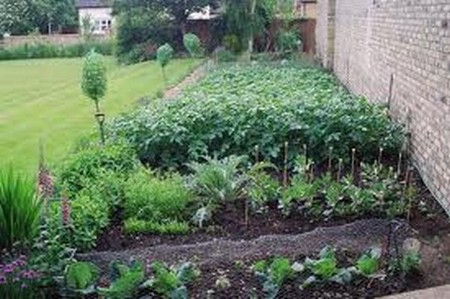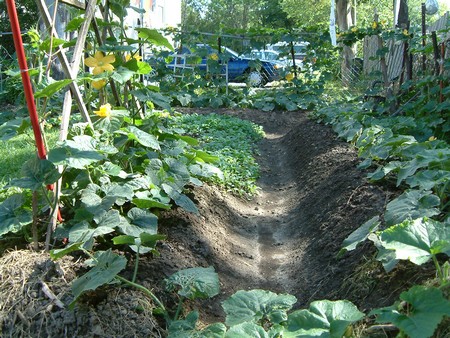Best Way to Harvest and Store Your Own Vegetables
What do you do if all your vegetables crop at once, or while you are away7 To a certain extent, you can plan ahead to avoid gluts and holidays but most of us end up with excess produce, and it makes sense to store at least some of it, while retaining as much flavor and goodness as possible.
Harvesting
Set aside time to pick the crops that are at their peak and concentrate on eating or storing them while they are really fresh. If possible, water them the evening before and pick them when they are turgid very early the next morning. The second best time is in the cool of a summer evening. Once you have picked them, keep the vegetables cool; if you travel to your allotment, use portable cool boxes to transport the produce.
As soon as the vegetables are picked, their vitamin levels start to drop. The most vulnerable is vitamin C. This water-soluble vitamin is not only destroyed by cooking in water, but simply by being exposed to air and sunlight. Fresh vegetables will retain vitamin levels if they are eaten raw or lightly cooked, or are frozen on the day of harvesting.
Storing
Only store produce that is healthy and sound; any blemishes or softness will get worse during storage, and problems can spread to neighbouring vegetables. Most leafy crops can be stored in the short term (a week or so) in the salad compartment of a fridge. For longer-term storage, use one of the four methods discussed below.
Freezing
Plunging prepared vegetables into boiling water for a few minutes (blanching) is a worthwhile preliminary step for freezing most vegetables. Blanching kills bacteria and destroys enzymes that could, in time, taint food. A limited range of crops do not need to be blanched if they are consumed within a month or so. Once blanched, vegetables can be frozen for a year unless otherwise stated.
Aim to pick, blanch and freeze the produce on the same day. Put the freezer on fast freeze an hour before filling it. Prepare the vegetables as you would for normal cooking, i.e. clean and cut them into even-sized sections. Blanch them in batches of 250-300g in 2 litres of boiling salted water. Use a wire blanching basket so you can move batches quickly in and out of the boiling water. Cool the blanched vegetables in a large bowl of iced water for a few minutes, then transfer them into freezer bags. Remove excess air, then seal and label the bags. Storing dry
To store potatoes you need double paper sacks and a place that is dark and cool, but above 4″C. An outbuilding, cellar, garage or a cupboard under the stairs should do. Other vegetables that will keep in a dry, cool, frost-free place are onions, garlic, shallots, marrows, pumpkins, winter squashes and winter cabbages. Peas and beans can be left on the plants to dry out and then spread out on trays in an airy shed or greenhouse. When the pods are dry and brittle, crack them open and store the seeds in screw-top jars.
Leaving in the ground
Brussels sprouts, winter cabbage and leeks will stand outside until needed. Root vegetables such as carrots, parsnips, swede, turnips and, for a time, beetroot can be left in well-drained ground until they are needed. Mark the root crops so you can find them once the foliage has died down. Cover the soil with a layer of straw, then black plastic; this will stop the soil freezing and make the vegetables easier to dig up.
Storing in sand
Harvesting root crops in mid-winter is not pleasant, so put some of the crops in boxes of sand and keep them in a shed, cellar or garage. Remove any foliage and lay the roots on a layer of moist sand, then cover with sand. Put the large roots at the bottom as they will store for longer than the smaller ones.
Categories
Advertisements
Recent Articles
 How to Understand Bed Sizes – A Small Guide
How to Understand Bed Sizes – A Small Guide How to Select Some Must Have Kitchen Accessories
How to Select Some Must Have Kitchen Accessories Best Way to Change a Car Tire
Best Way to Change a Car Tire Best Way to Write an Affirmation
Best Way to Write an Affirmation Best Way to Take Charge of Your Financial Life
Best Way to Take Charge of Your Financial Life Best Way to Survive a Party When You Don’t Know Anyone
Best Way to Survive a Party When You Don’t Know Anyone Best Way to Stop Self Sabotaging Yourself
Best Way to Stop Self Sabotaging Yourself Best Way to Start Journal Writing
Best Way to Start Journal Writing Best Way to Speak with a Powerful Voice
Best Way to Speak with a Powerful Voice Best Way to Simplify Your Life
Best Way to Simplify Your Life Best Way to Respond to a Put-Down
Best Way to Respond to a Put-Down Best Way to Reduce Acne Breakouts
Best Way to Reduce Acne Breakouts Best Way to Recover from Dining Disasters
Best Way to Recover from Dining Disasters Best Way to Quit Your Job Gracefully
Best Way to Quit Your Job Gracefully Best Way to Make Your Own Website
Best Way to Make Your Own Website



Leave a Reply